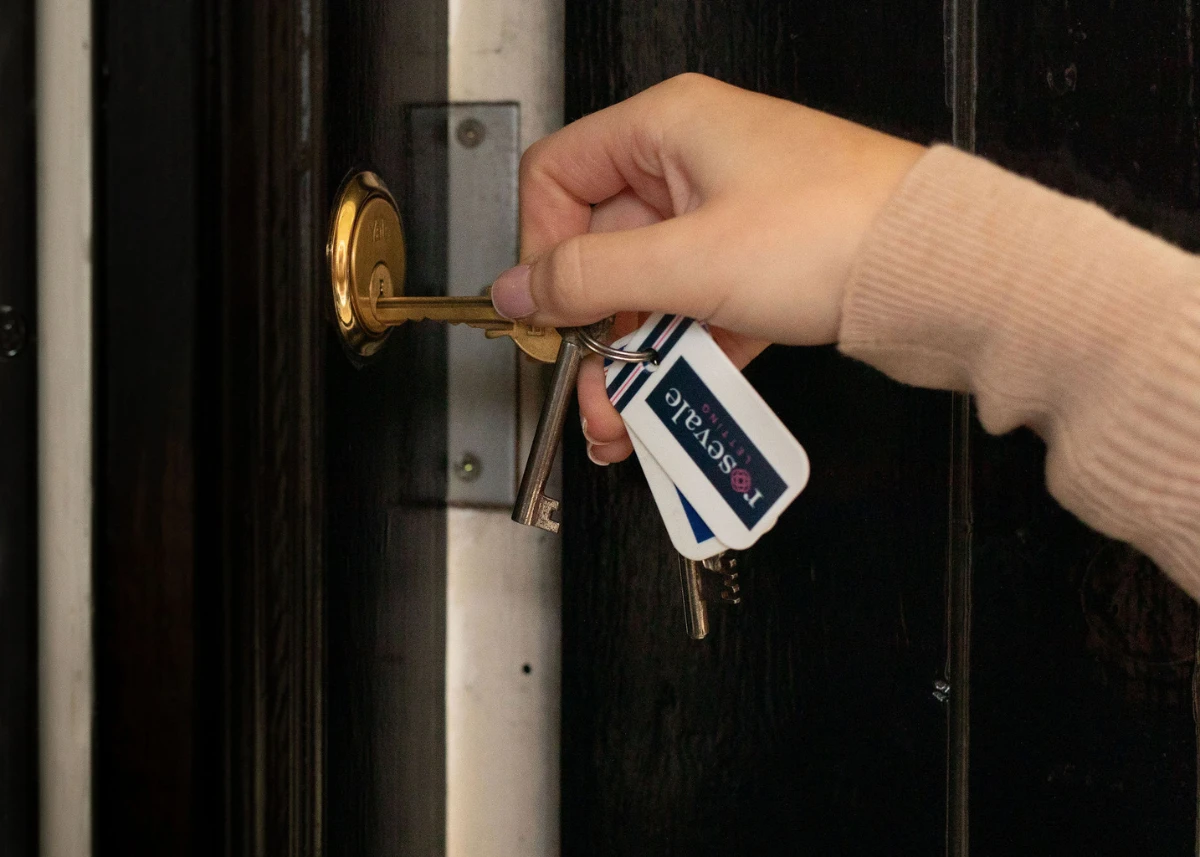When you’re a landlord, there’s a lot to consider, and landlord insurance can help to provide peace of mind when renting your property out.
This is a big topic, so in this blog, we’ll explain exactly what landlord insurance is, the different types of policies available, what it covers and any extra cover we’d recommend. We’ll also provide some advice around how to choose the right one for you as it’s not one size fits all.
What is landlord insurance?
First things first, what is landlord insurance? It’s a specialist type of insurance policy that is specifically designed to protect property owners who rent out their homes to tenants.
Landlord insurance provides cover for the unique risks that arise from letting a property out to other people. It’s worth noting that standard home insurance, that you will have in place for a property that you actively life in, becomes invalid the moment you rent it out.
Key features of landlord insurance
The key features that landlord insurance policies will offer is buildings insurance, landlord’s contents insurance, property owner’s liability cover, loss of rental income, legal expenses and alternative accommodation.
Alternative accommodation allows you to house your tenants elsewhere, if the property can’t be lived in, after an insured event occurs (like a flood or fire).
We’ll go into more detail around each of these key features later in this blog.
How it differs from standard home insurance
Standard home insurance is an insurance that covers owner-occupiers, i.e. someone living in their own home.
As mentioned earlier, this type of home insurance becomes invalid if the property is rented out. It usually covers buildings and contents, and you can opt to add liability for accidents in the home should you wish.
Landlord insurance is an insurance that is tailored to properties that are being rented out and the associated risks that go along with this.
Tenants of a property are viewed as higher risk than when the owner is living in a property. The key features of landlord insurance are outlined in the section above, but essentially, the primary risks for landlords include missed rent, damage to the property by tenants, or legal disputes between the tenant and landlord.
Who needs landlord insurance?
While landlord insurance is not a legal requirement in the UK, it is strongly advised that you have it in place to protect you from the risks associated with having tenants living in your property.
Anyone renting out a property, be that private landlords, buy-to-let landlords, HMO landlords and even accidental landlords (people who inherit a property or who move cities or countries for work, and thus rent their property out for a period of time) should opt for landlord insurance to ensure they are protected.
Many mortgage providers will require you to have landlord insurance in place if you take out a buy-to-let mortgage. If you are an HMO landlord and have multiple occupants living in your property, it is very important to have landlord insurance as more tenants equals more risk of accidents, damage or missed rental payments.
Often letting agents will make landlord insurance a requirement when bringing on a new property.
Types of landlord insurance
Here, we’ll dive a bit deeper into the different types of cover you get with landlord insurance policies.
Buildings cover
Buildings insurance provides protection against damage to the structure of the property e.g. the walls, floors, roof and fitted kitchens and bathrooms.
It protects against damage caused by fire, flooding or subsidence (when a property begins to sink into the ground).
It’s worth noting that some factors will include buildings insurance within their factoring fees. It’s important for landlords to check whether this is the case or not prior to letting a property out.
Landlord’s contents cover
Landlord’s contents insurance protects any furniture, furnishings and appliances provided by the landlord to the tenants in the property.
Note, this does not extend to tenants’ belongings, they will need to take out their own contents insurance to ensure cover for their own furniture and possessions in the property.
Liability cover
This protects landlords if a tenant, visitor or tradesperson is injured at the property and the landlord is found to be legally responsible for said injury.
It also protects against damage to other people’s property in the same building if, for example, a leak in the property’s bathroom damages the flat below.
What landlord insurance covers
Now that we understand the various different types of landlord insurance and what it is for, let’s examine what landlord insurance covers.
Property damage
As mentioned above, buildings cover helps to protect against property damage caused by fire or floods.
The policy will generally cover the cost of repairing or rebuilding your property. It’s vital you insure your property for the rebuild value, rather than purely the market value.
Loss of rent
Not only do landlords need to have protection for their property, but they also need to have protection for their income, as they will likely have mortgage payments to make every month.
Loss of rent cover ensures that should your tenant(s) need to move out of the property due to an insured event occurring, such as a flood or fire, which makes the property uninhabitable, the landlord is able to make an insurance claim for loss of rent, and thus, still be able to meet monthly mortgage payments.
Sometimes, a landlord will be obliged to rehouse the tenant(s) in this situation, so this cover helps to protect against these additional costs.
Legal expenses
Landlord insurance can also provide protection around legal expenses that could arise if a tenancy agreement goes sour, for example, if a landlord is required to evict a tenant to recover any rent due, or to defend against a claim brought by a tenant.
Recommended extra cover
As with all insurance policies, there are add-ons you can opt for to supercharge your cover and maximise your protection.
Below, we’ll take a look at what these are:
Rent guarantee
Rent guarantee insurance can be added on to a landlord insurance policy to protect against loss of rental income if a tenant fails to pay rent.
Normally, landlords are able to claim for a period of up to six or twelve months of unpaid rent, providing the time and space to either regain possession of the property, or time until the tenant resumes making rent payments. This means that the landlord is never out of pocket and provides peace of mind when it comes to issues of financial stability, cashflow and mortgage commitments.
Rent guarantee cover means that landlords still receive rental income during ongoing legal proceedings, such as eviction, which can take a long time. Often rent guarantee policies will include cover for legal costs incurred.
The risk of someone falling behind with rent is higher within HMO properties due to multiple individuals paying rent each month.
Accidental damage
Accidental damage covers unintentional and unexpected damage to a property or its contents caused by tenants, guests and sometimes even tradespeople! For example, if a tenant accidentally damages a kitchen worktop or spills red wine on a carpet.
By having this cover in place, landlords are spared costly repairs provides clarity in what can be a grey area. Without this add-on, an insurer could argue that this kind of damage is due to tenant negligence (therefore negating the claim) or they could even try to say it is fair wear and tear.
This goes beyond buildings and contents insurance mentioned above, which only covers major insured events such as a fire or flood.
Emergency assistance
Emergency assistance cover provides around-the-clock support for urgent issues that result in a property being unsafe or uninhabitable, such as burst pipes or loss of power due to internal wiring issues.
This takes the onus off the landlord and tenant, with the insurer arranging a qualified tradesperson to quickly attend the property and rectify the issue. The insurer will also cover any costs associated with this call-out, up to a set amount.
Choosing the right landlord insurance
The right kind of landlord insurance varies depending on a number of different factors that are worth considering. Please note, many letting agents are happy to help landlords figure out their requirements to ensure they are adequately protected, so it’s worth having a discussion.
Assessing your needs
When assessing your needs, think about your property.
At a minimum, it’s worthwhile getting buildings insurance, and it’s highly recommended to take out property owners’ liability insurance and loss of rent cover.
If you are letting out a furnished property, you will likely want to add contents cover to protect your furniture and appliances. If you are letting out to students or have an HMO property, taking out accidental damage insurance is probably a wise move.
Have a think about how risk-averse you are; if you don’t like taking risks, extras such as rent guarantee, legal expenses cover and emergency assistance are probably worthwhile additions.
Factors affecting cost
The larger your property, the higher the cost to insure it (generally). Location also plays a role here; if the property is in an area with higher crime rates, flood risks or subsidence issues, insurance costs will rise.
Some tenants are seen as higher risk which can raise the price of premiums, usually this happens when you are letting out to students or your flat is an HMO property.
The more add-ons you opt for, the higher your insurance premium will be, but the wider your cover will be too, increasing your protection.
Ensuring your property is secure and well-maintained will help to keep insurance costs down, as will having no previous insurance claims.
Opting for a higher voluntary excess (the amount you pay towards the claim as the policy holder) usually brings the price of the insurance premium down.
If your property is going to be left unoccupied for long periods of time, for example, between tenancies, it is likely that costs for insurance will go up to reflect the fact that your property will be empty.
And finally, landlord insurance policies covering higher rents or higher rebuild costs will cost more as a result.
Legal considerations for landlords
There are a number of laws in place to protect tenants and regulate the rental sector. We’ll highlight these below:
Regulatory Obligations
In Scotland, all landlords must register with the Scottish Landlord Register and for rental properties with more than 3 individuals from different households, they must have an HMO licence in place.
A legally binding tenancy agreement must be provided to tenants, and deposits must be lodged with an approved Scottish deposit scheme within 30 working days of a tenancy commencing.
There are a number of safety regulations that must be adhered to around obtaining an annual Gas Safety Certificate, an Electrical Installation Condition Report (EICR) every 5 years, working smoke alarms and, when it is an HMO property, fire doors and escape routes too.
A property must also be in good condition for tenants to live in, and landlords have repair and maintenance duties to ensure a high standard of accommodation.
In Scotland, if you are looking to evict a tenant, since 2017, all private tenancies are Private Residential Tenancies, which means no fixed end date to a tenancy can be set, and there are rules around rent increases and evictions. In order to evict someone, you must be able to justify this under certain set grounds, and the law tends to fall in favour of tenants.
Tenant obligations & insurance
A tenancy agreement places certain legal and practical responsibilities on the tenant in order to protect the property and ensure it is well-maintained.
Tenants are obliged to:
- Pay rent on time
- Pay utility bills and council tax
- Look after the property
- Respect neighbours
- Follow the terms of the tenancy agreement
- Allow access for routine inspections or repair work
- End of tenancy obligations such as leaving the property in good condition, returning keys, paying any outstanding bills and removing all possessions
Tenants could consider taking out their own contents insurance to protect their personal belongings in the property. They could also take out ‘tenant’s liability insurance’, which covers accidental damage to the property.
Conclusion
And there you have it, a comprehensive guide to landlord insurance. It’s a huge topic with plenty to consider, so if you’d like to have a conversation with us here at Rosevale we’d be pleased to chat things through with you and provide bespoke advice.
If you have any further questions, or would like to discuss letting out a property in Glasgow in more detail, please don’t hesitate to contact our team.




